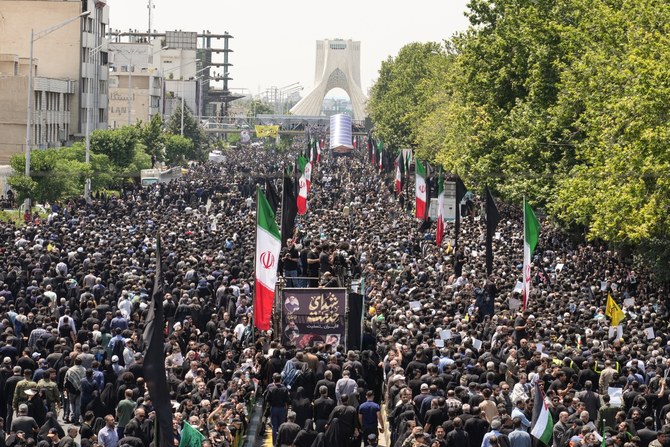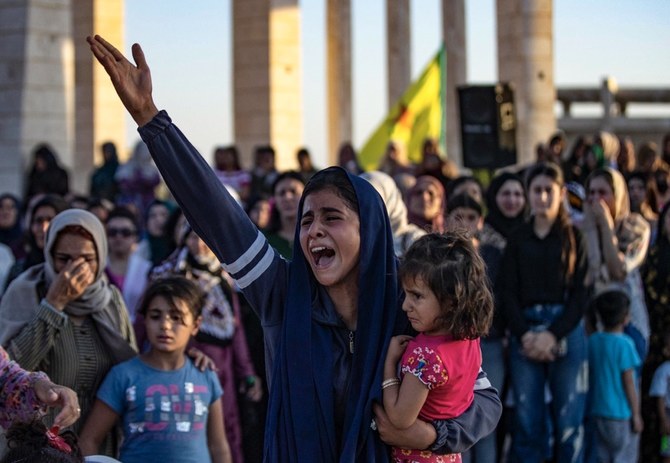
Sunday’s helicopter crash in Varzaqan, Iran, was a historic moment. The helicopter was carrying several high-profile Iranian officials, including President Ebrahim Raisi, Foreign Minister Hossein Amir-Abdollahian, East Azerbaijan Governor Malek Rahmati and the supreme leader’s representative in East Azerbaijan, Mohammed Ali Ale-Hashem. The incident resulted in the unprecedented death of a sitting Iranian president due to a helicopter crash. This event rippled across the region and the world, given the significant roles and influence of the individuals involved. It also came at a time of considerable regional tension and internal political dynamics, making its ramifications both immediate and far-reaching.
Raisi had held numerous significant positions over the years, including deputy chief justice, attorney general and chief justice. His judicial roles were marked by his time as deputy prosecutor and then prosecutor of Tehran during the 1980s and 1990s. Known as the “Butcher of Tehran,” Raisi was one of the four members of the prosecution committee responsible for the execution of thousands of political prisoners in 1988.
Raisi also served as the custodian and chairman of Astan Quds Razavi, a prominent bonyad, from 2016 until 2019. Additionally, he was a member of the Assembly of Experts from South Khorasan Province.
Raisi’s political ambitions were evident in his 2017 presidential run, when he was the candidate of the conservative Popular Front of Islamic Revolution Forces, although he lost to the moderate incumbent Hassan Rouhani. His second presidential bid in 2021 led him to succeeding Rouhani.
His significant influence within Iran’s political and judicial systems positioned him as a candidate to be supreme leader
Dr. Majid Rafizadeh
Raisi was widely regarded as the likely successor to Supreme Leader Ali Khamenei. His close ties to the clerical establishment and his significant influence within Iran’s political and judicial systems positioned him as a candidate for the leading political role in the country. This belief was underpinned by his alignment with the core values of the Islamic Republic and his prominent roles in various judicial and political institutions, which are seen as grooming grounds for the eventual leadership.
Raisi’s death occurred amid heightened tensions between Iran and Israel. Last month, an Israeli airstrike targeted the Iranian consulate in Damascus, Syria, resulting in the death of several high-level individuals, including Maj. Gen. Mohammad Reza Zahedi, a senior Quds Force commander, and seven other Islamic Revolutionary Guard Corps officers. Iran retaliated with missile and drone strikes against Israel, further escalating the conflict. Israel then launched a series of missile strikes on Iranian military sites. These events were a significant escalation in the long-standing conflict between the two nations, with broader implications for regional stability and security.
Iran’s nuclear advancements also continue to be a source of high tension both regionally and globally. The recent developments in this sphere, coupled with ongoing regional conflicts, add to the complexity and volatility of the situation. The international community remains deeply concerned about Iran’s potential to develop nuclear weapons, which could further destabilize an already fragile Middle East.
According to the Iranian constitution, the death of the president means the first vice president, currently Mohammed Mokhber, is in line to assume the presidency. However, this transition is not automatic and requires the approval of the supreme leader. Mokhber’s elevation to acting president on Monday ensured continuity, while also underscoring the significant influence of Khamenei in Iran’s political structure, with even constitutional provisions subject to his endorsement.
Mokhber, 69, had been serving as the seventh first vice president of Iran since 2021. He is also a member of the Expediency Discernment Council. His career includes service as an officer in the IRGC’s medical corps during the Iran-Iraq War.
While the death of Raisi is significant, the broader framework of power within Iran remains unchanged
Dr. Majid Rafizadeh
In the event of the president’s death, the Iranian constitution mandates that a council, comprising the first vice president, the speaker of parliament and the head of the judiciary, must organize an election for a new president within a maximum of 50 days.
Ali Larijani, a former IRGC military officer and speaker of the parliament from 2008 to 2020, is one potential candidate for the presidency. Former President Mahmoud Ahmadinejad might also consider running again. Abdolnaser Hemmati, the former governor of the central bank, could be another contender. Mohsen Rezaee, commander-in-chief of the IRGC from 1981 to 1997, and Saeed Jalili, a former secretary of the Supreme National Security Council, are also likely candidates. These individuals represent the hard-line political camp in Iran.
The death of Raisi is unlikely to fundamentally alter Iran’s domestic or foreign policies. This is largely due to the enduring influence of Khamenei, who has ultimate authority in the country. Additionally, the IRGC wields significant power both politically and economically, ensuring that Iran’s strategic direction remains consistent.
While the death of Raisi is significant, the broader framework of power within Iran remains unchanged, with the supreme leader and the IRGC continuing to play pivotal roles in shaping the country’s policies.
Raisi’s death may, however, trigger more intense competition among the potential successors to Khamenei. As the supreme leader ages — he is now 85 — speculation regarding his successor grows and Raisi’s death could intensify the jockeying for position among Iran’s hard-line political elite. This competition is not only about who will become the next supreme leader, but also who will ascend to the presidency. The interplay between these two roles is crucial in determining Iran’s future political trajectory, especially in a post-Khamenei era. The next few months will likely see significant political maneuvering as various factions within the Iranian establishment position themselves for leadership roles.
Majid Rafizadeh is a Harvard-educated Iranian American political scientist. X: @Dr_Rafizadeh
Disclaimer: Views expressed by writers in this section are their own and do not necessarily reflect Arab News" point of view












